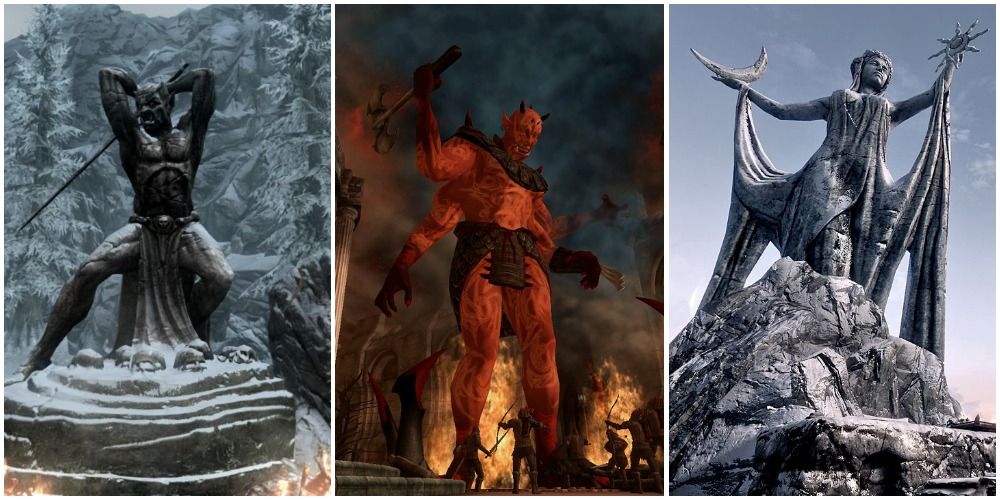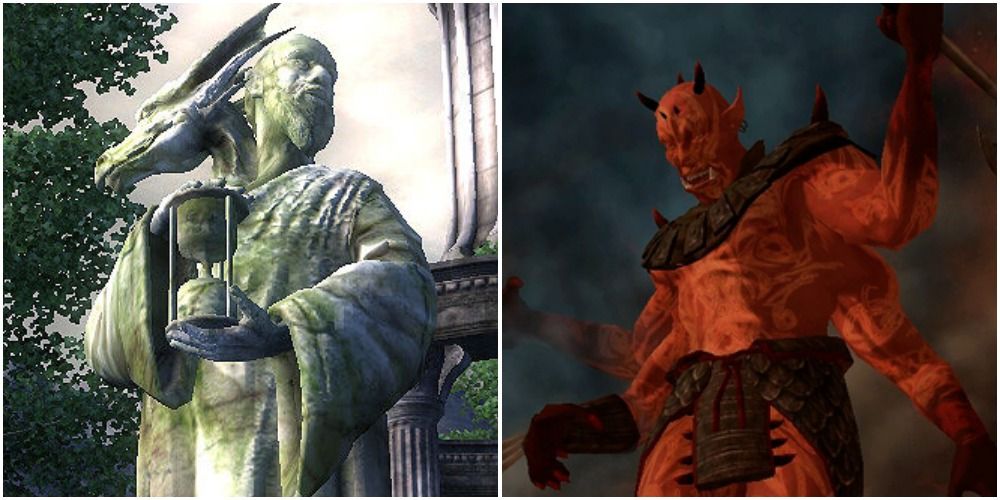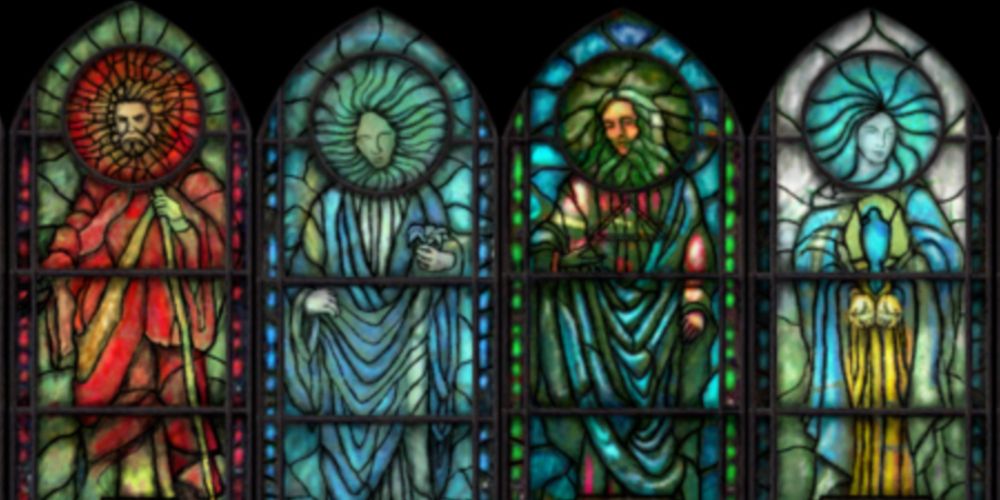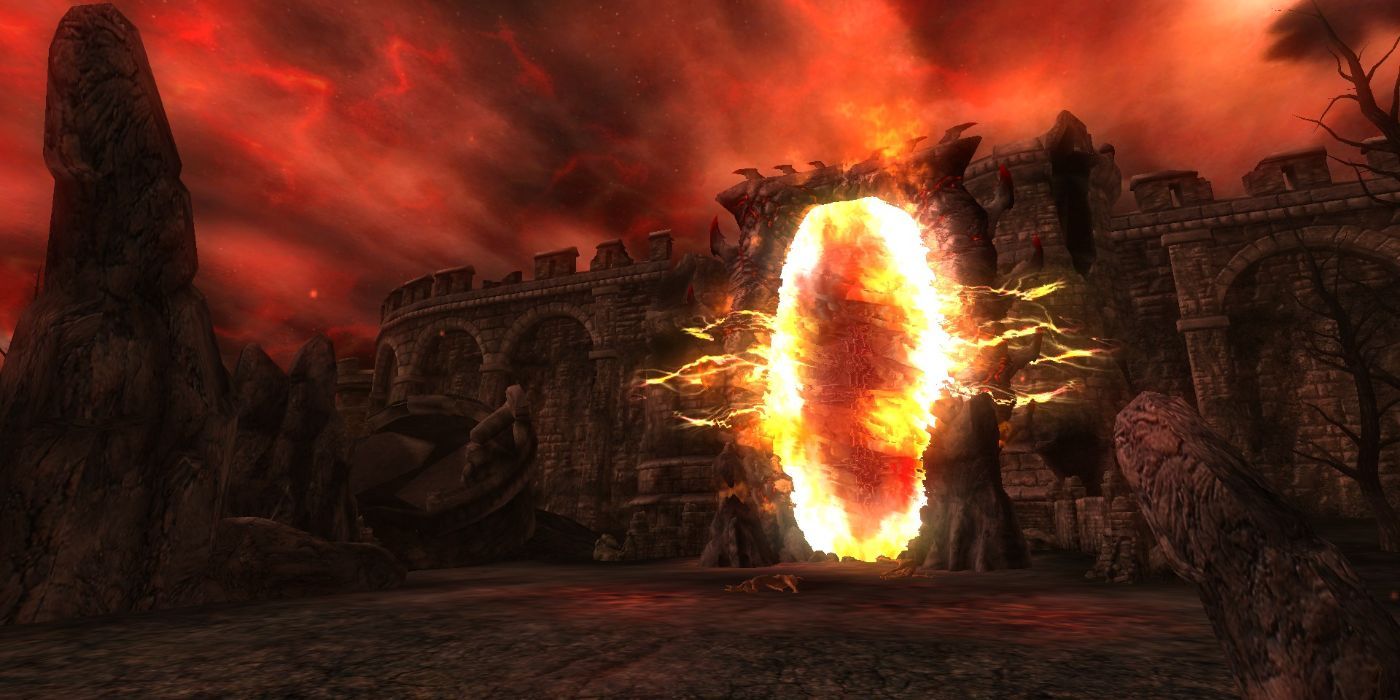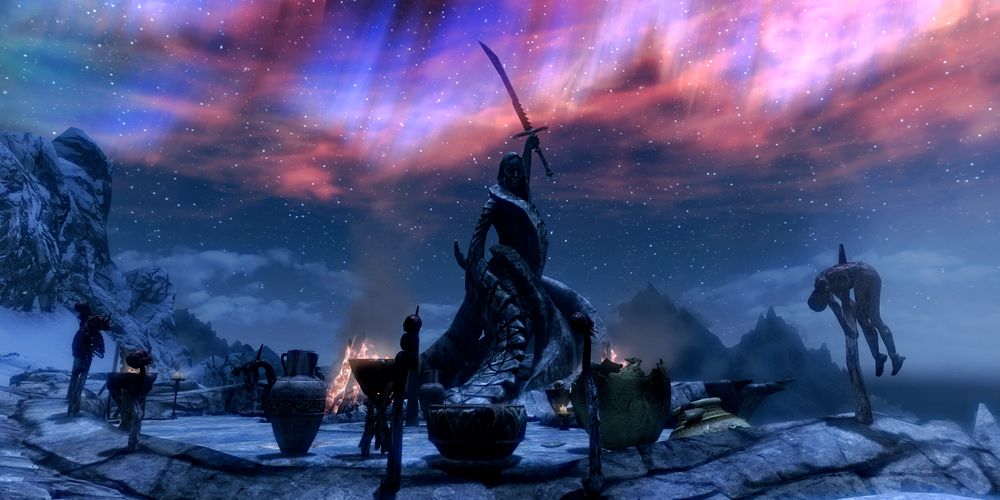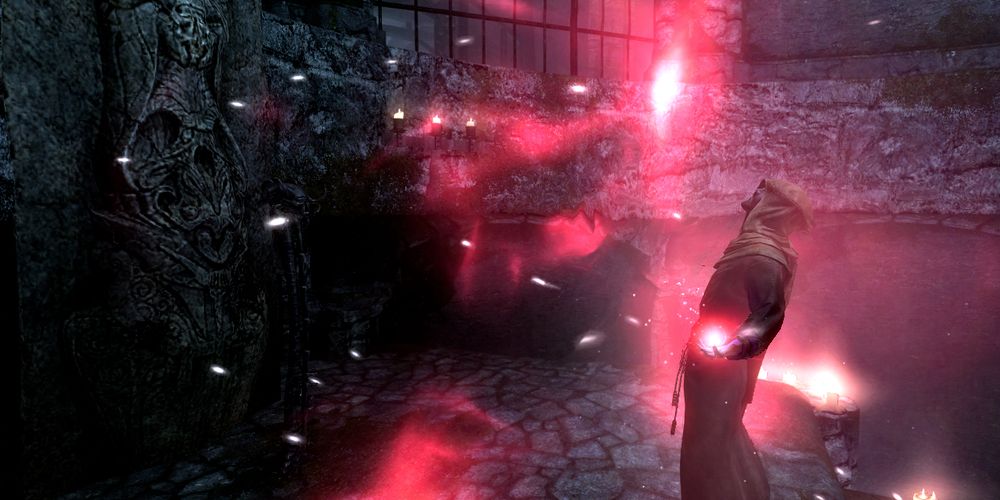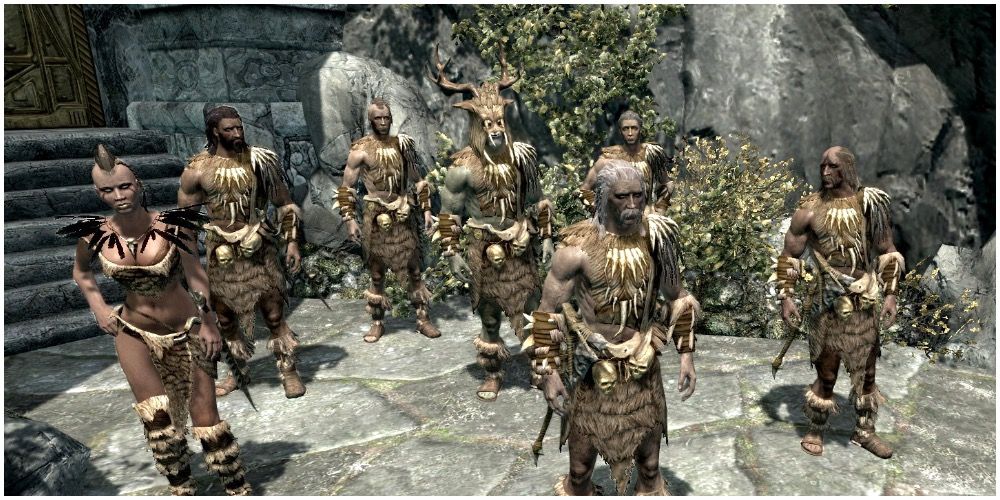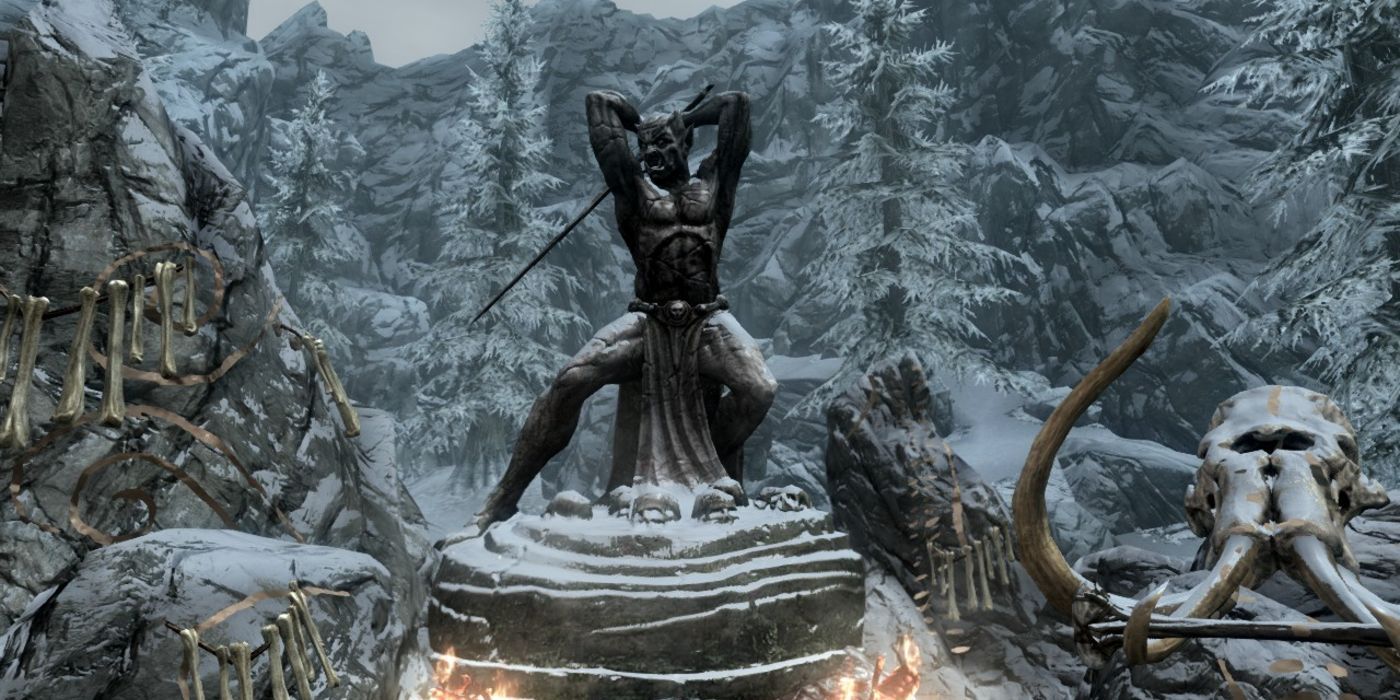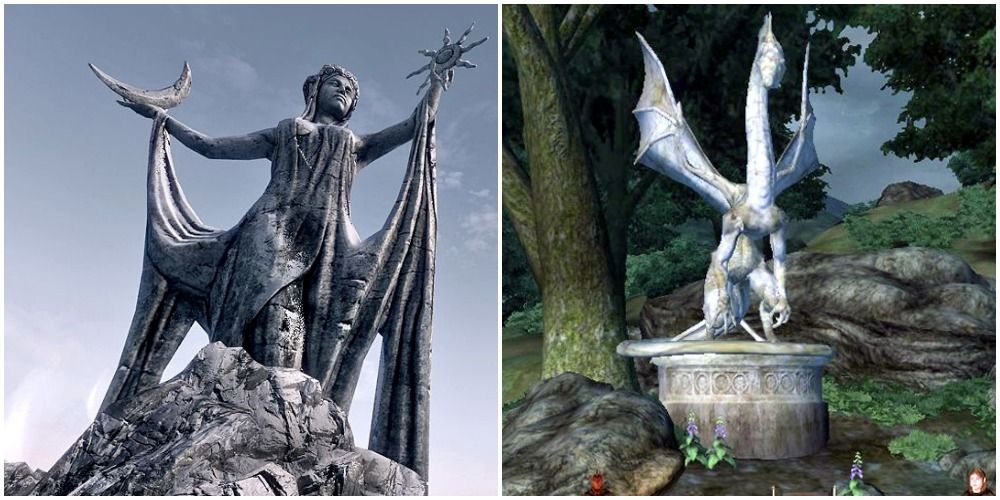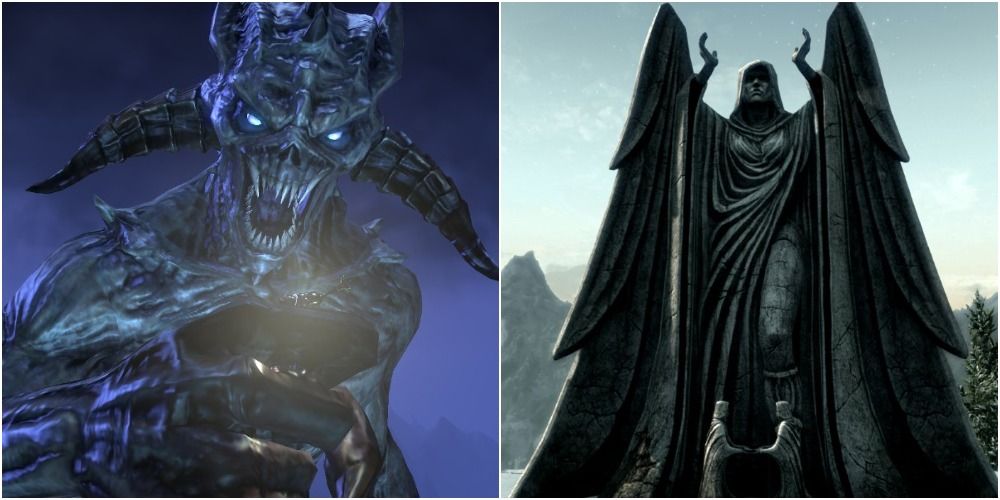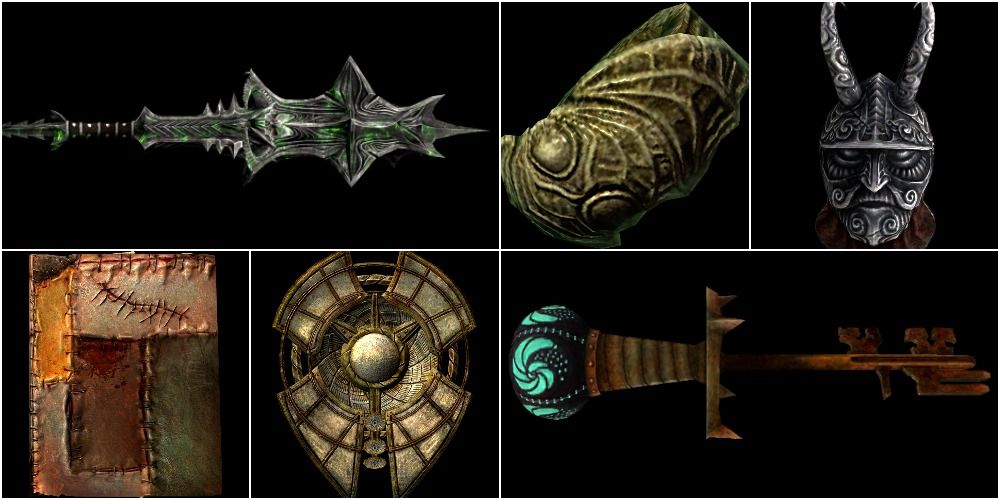The Daedric Princes are some of the most powerful and mysterious figures in the Elder Scrolls universe. In each game, players can make deals with them, perform services, and gain their favor—but often, the Princes remain elusive as to their true goals. Plenty of lore exists about these shadowy beings, their origins, and their abilities. However, much of it isn't immediately apparent to players.
By delving into the dense and complex lore of the games, players can begin to solve the puzzle of the Daedric Princes. This can help glean a sliver of insight into their inscrutable motivations, powers, and intentions.
10 Origins
The et'Ada were ethereal beings, the original inhabitants of the universe. One of the et'Ada, Lorkhan, created the mortal plane. Some of his brethren chose to aid him, giving their own life force to create the mortal world of The Elder Scrolls. Others refused, and instead created domains for themselves in the planes of Oblivion. The former became the Aedra, while the latter became the Daedric Princes.
Some Princes, however, are actually former Aedra that have been changed or cursed in some way. Malacath and Meridia both fit this description.
9 Relationship With Aedra
Because they chose not to give up their power, the Daedra are far stronger than their Aedra cousins. However, power corrupts, and several of the Princes demonstrate that idea. Even those who are not evil often have only their own interests in mind.
Aedric deities, such as the Divines, are typically benevolent and dedicate themselves to guiding and protecting mortals. Daedra, on the other hand, are disdainful of these weaker deities and often toy with mortals for their own amusement, using their great power to serve themselves.
8 Separate Realms
Though mortals often think of Oblivion as a single realm apart from Mundus, each plane of Oblivion is as separate from the others as they are from the mortal plane.
Mortal beings can access some of these planes (or be transported there unwillingly), while others are sealed. For example, Mehrunes Dagon's plane, the Deadlands, was easily accessible during the Oblivion Crisis and thus is one of the best understood. Namira's plane, on the other hand, remains a mystery to many mortals, as none who travel there have ever returned.
7 Genderless
Most Daedric Princes are referred to as either male or female. Vaermina, for example, is depicted as a woman, while Molag Bal is seen as male. Even Hermaeus Mora, whose preferred physical shape is a grotesque mass of tentacles, is referred to with masculine pronouns in the lore.
However, the Princes are genderless. Any masculinity or femininity in their appearance is their own choosing, as they can manifest however they please. Boethiah is perhaps the best example, taking a masculine form in Oblivion and a feminine one in Skyrim.
6 Effect On Mortals
Humans, elves, and beastfolk have sought the Daedra's knowledge and power since the dawn of time. Such bargains can bring mortals glory that they never dreamed of—but no deal comes without a price.
Consulting with Daedra, especially those of an evil disposition, can have detrimental effects on a mortal's psyche. Nightmares, dark visions, madness, and paranoia are common. Even their physical appearance may change. Mortals who routinely deal with the Daedra may develop black flecks in their eyes, evidence of their dark dealings.
5 Connection To The Forsworn
The Forsworn of the Reach often speak of "Old Gods," whom they worship instead of the Empire's Divines. These Old Gods are in fact the Daedric princes. No hints exist as to which particular Princes the Forsworn venerate.
The Forsworn's Daedra worship is one reason others revile them so deeply. Because of the evil nature of so many Daedric princes, their acolytes can inspire fear and disgust. However, these are not the only deities they worship, as many of their lairs hold shrines to Kynareth.
4 Opposing Interpretations
While some Princes are seen as benevolent and some as inherently evil, not everyone agrees on their motivations. The same figure may be seen by one group as a benevolent leader, and by another as a devil.
One example is Malacath, god-king of the Orcs, sworn to protect his outcast children. Yet, the Dunmer view him as one of the four most evil Daedra, designed to test their will. The Nords, meanwhile, bear a powerful hatred for all Daedric Princes, even less evil forces like Azura and Meridia.
3 Unequal Power
Though they rank as the most powerful among the Daedra, not all Princes are equal in their power. Peryite, for example, is far weaker than Azura or Molag Bal. Jyggalag, meanwhile, can only manifest once at the end of every era, severely limiting his influence.
Throughout the games, several Daedric Princes play major roles in key storylines, such as Azura in Morrowind or Hermaeus Mora in the Dragonborn DLC. Others rarely appear, and when they do, they have little effect on the world at large.
2 Rivalries
The Daedric Princes do not all get along. Skyrim players who complete Molag Bal's quest will know of his bitter rivalry and hatred towards Boethiah. However, theirs is not the only contentious relationship that exists between Princes.
Malacath, for example, is not even considered a Daedric Prince by his peers; however, this perfectly fits his sphere as a patron of the ostracized and spurned. Meridia, meanwhile, bears a foul hatred for anyone who tampers with the cycle of life. This implies a distaste for Molag Bal, father of vampires.
1 Artifacts
Every Daedric artifact has its own story. Some are powerful weapons bathed in centuries of blood, while others provide access to knowledge beyond ordinary mortal comprehension. The power of these items is often too great to go unnoticed.
Any item linked to a Daedric Prince may have a strange aura surrounding it. In Dragonborn, for example, Neloth will comment that Hermaeus Mora's Black Books seem "wrong somehow." Meanwhile, if the player carries the Mace of Molag Bal, city guards will demand that they "get it away."

